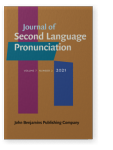Vol. 7:2 (2021) ► pp.265–290
Punching through the barrier
Using gesture to activate productive oral vocabulary
This paper aims to investigate how productive oral vocabulary development can be promoted by focusing on word stress patterns. The Rhythmic Fight Club (RFC) pronunciation technique has been used in numerous ESL/EFL classrooms, but its effect on the L2 vocabulary development of learners has yet to be investigated. The present study focused on adult ESL learners and tested a four-stage learning cycle aimed at developing productive oral vocabulary. This paper focuses on findings related to one aspect of that learning cycle which used the RFC to draw learner attention to word stress patterns in order to control productive output. Findings reveal that repetition of target words whilst making a gesture helped to enhance the learners’ productive output accordingly. The paper concludes that kinaesthetic/tactile classroom teaching techniques such as the RFC can help learners to develop productive oral vocabulary by reconceptualising their perception of English speech rhythm.
Article outline
- 1.Introduction
- 1.1Oral production whilst making gestures
- 2.The present study
- 2.1Site and participants
- 2.2The workshop
- 2.2.1Haptic rhythm fight club
- 2.2.2Target vocabulary
- 2.3Research design
- 2.3.1Design principle
- 2.3.2Data and analysis
- 3.Findings and discussion
- 3.1Learner perceptions of English rhythm
- 3.1.1Deconstructing English stress
- 3.1.2Reconceptualising English stress
- 3.1.3Stabilisation of productive output
- 3.1Learner perceptions of English rhythm
- 4.Conclusion
- Notes
-
References
